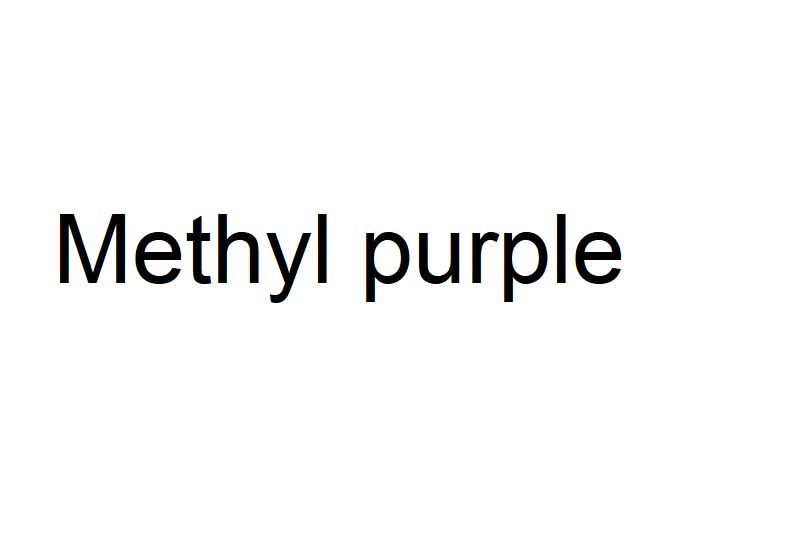
Methyl purple
CAS No. 8004-87-3
Methyl purple( —— )
Catalog No. M24800 CAS No. 8004-87-3
Methyl purple is an introduced quinone-imide redox dye that has been shown to be an exceptionally sensitive monitor of photosystem I activity in chloroplasts.
Purity : >98% (HPLC)
 COA
COA
 Datasheet
Datasheet
 HNMR
HNMR
 HPLC
HPLC
 MSDS
MSDS
 Handing Instructions
Handing Instructions
| Size | Price / USD | Stock | Quantity |
| 5MG | 45 | In Stock |


|
| 10MG | 68 | In Stock |


|
| 25MG | 115 | In Stock |


|
| 50MG | 173 | In Stock |


|
| 100MG | 258 | In Stock |


|
| 200MG | 388 | In Stock |


|
| 500MG | 642 | In Stock |


|
| 1G | Get Quote | In Stock |


|
Biological Information
-
Product NameMethyl purple
-
NoteResearch use only, not for human use.
-
Brief DescriptionMethyl purple is an introduced quinone-imide redox dye that has been shown to be an exceptionally sensitive monitor of photosystem I activity in chloroplasts.
-
DescriptionMethyl purple is an introduced quinone-imide redox dye that has been shown to be an exceptionally sensitive monitor of photosystem I activity in chloroplasts.
-
In Vitro——
-
In Vivo——
-
Synonyms——
-
PathwayOthers
-
TargetOther Targets
-
RecptorOthers
-
Research Area——
-
Indication——
Chemical Information
-
CAS Number8004-87-3
-
Formula Weight——
-
Molecular Formula——
-
Purity>98% (HPLC)
-
Solubility——
-
SMILES——
-
Chemical Name——
Shipping & Storage Information
-
Storage(-20℃)
-
ShippingWith Ice Pack
-
Stability≥ 2 years
Reference
1. Graan T , Ort D R , Prince R C . Methyl purple, an exceptionally sensitive monitor of chloroplast photosystem I turnover: physical properties and synthesis[J]. Analytical Biochemistry, 1985, 144(1):193-198.
molnova catalog



related products
-
H-Abu-OH
L-alpha-Aminobutyric acid also known as (S)-2-aminobutanoic acid homoalanine 2-AABA ethylglycine or L-butyrine is a member of the class of compounds known as L-alpha-amino acids. L-alpha-Aminobutyric acid is a non-proteogenic amino acid that can be found in the human kidney in liver tissues and in most biofluids or excreta (e.g. feces breast milk urine and blood).
-
beta-Amyrin palmitat...
Beta-Amyrin palmitate may release norepinephrine from newly synthesized pools, and thus, it may activate noradrenergic activity.
-
Methyl neochebulinat...
Methyl neochebulinate is a natural product for research related to life sciences.



 Cart
Cart
 sales@molnova.com
sales@molnova.com


